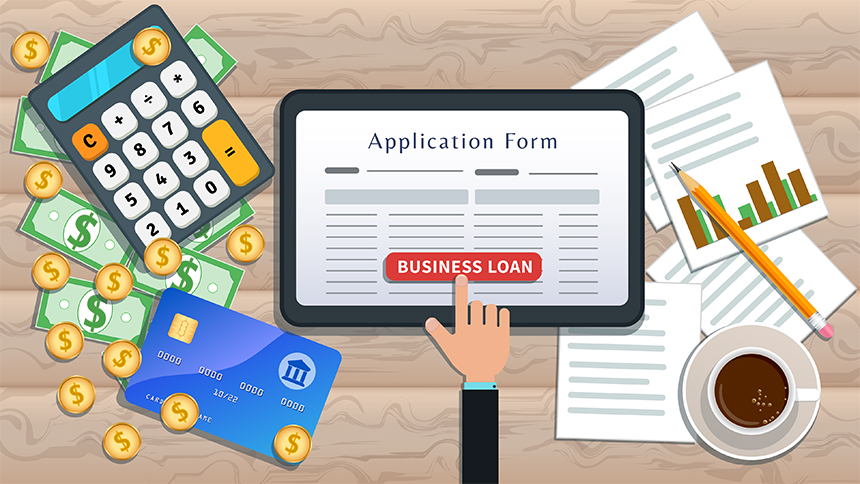An Overview of SBA loans
Small Business Administration (SBA) loans are government backed loans providing financial support to small businesses unable to secure financing on terms through conventional lending channels.
The SBA itself does not lend the money to the business owner. As an SBA lender, Diamond still processes and provides the funding to you, and the government provides Diamond the guarantee of being paid back.
Here’s a quick overview of what you need to know about SBA loans.
Benefits of SBA loans
The main advantage is actually getting a loan. With the government guarantee to the financial institution, the risk is reduced for all parties.
Other benefits include:
- Lower down payments, conserving valuable working capital.
- Typically longer repayment terms, reducing monthly payments and improving cash flow management.
- Although interest rates vary, SBA loans often offer competitive rates compared to other financing options available to small businesses.
- Certain SBA loan programs, such as the Microloan program and loans for veterans, provide targeted support and extra help.
Overall, SBA loans can offer you more accessible financing options with terms that help reduce financial strain.
Eligibility
Lenders and loan programs have unique eligibility requirements. In general, eligibility is based on what a business does to receive its income, the character of its ownership, and where the business operates. Normally, businesses must meet SBA size standards, be able to repay, and have a sound business purpose.
Main criteria includes:
- Be a for-profit business, officially registered and operate legally.
- The business is physically located and operates in the US or its territories.
- The business’s credit must be sound enough to assure loan repayment.
- The requested loan is unavailable on reasonable terms from non-government sources.
Meeting the SBA’s eligibility requirements demonstrates that your business is stable, capable of repayment, and contributing positively to the US economy.
Types of SBA loan programs
There are four main SBA loans:
1: 7(a) loan
This is the SBA’s primary business loan program, providing loan guaranties to lenders that allow them to provide financial help for small businesses with special requirements. For example, 7(a) loans can be used for:
- Acquiring, refinancing, or improving real estate and buildings,
- Short- and long-term working capital.
- Refinancing current business debt.
- Purchasing and installation of machinery and equipment, including AI-related expenses.
- Purchasing furniture, fixtures, and supplies.
The maximum loan amount for a 7(a) loan is $5 million. Key eligibility factors are based on what the business does to receive its income, its credit history, and where the business operates. Your lender will help you figure out which type of loan is best suited for your needs.
2: Microloans
With an average loan of around $13,000 and a maximum amount of $50,000, a microloan helps small businesses, and some not-for-profit childcare centers cover the costs of starting up and expanding. The microloans can be used for a variety of purposes, including providing working capital, buying inventory and supplies, repairing premises, or enhancing small business processes.
The maximum repayment term is six years. This type of loan works well for online or home-based businesses. Freelancers might also find it helpful for expanding their business.
Each lender will have its own credit requirements and lending criteria, which may include some form of collateral. They will also set their own interest and repayment terms.
3: 504 loans
The SBA’s 504 loan program, also known as a Certified Development Company (CDC) loan provides long-term, fixed-rate financing for business owners to buy major fixed assets that enable business growth and job creation.
The maximum loan amount is $5.5 million and can be used to:
- Purchase or construct items like real estate, land and new facilities.
- Buy long-term machinery and equipment.
- Make improvements to utilities, parking lots and landscaping.
- Upgrade, renovate, modernize, or improve existing facilities, land, streets, and parking lots.
To get the 504 loan you’ll have to operate your business for a profit with a realistic business plan and relevant management experience. Before applying for a loan you’ll need to have tried to use other financial resources.
Other conditions your business will need to meet include having:
- A tangible net worth of less than $15 million.
- An average net income of under $5 million after taxes (over the last two years).
You’ll also have to show you can repay the loan on time from your business’s projected operating cash flow.
4. Disaster loans
A disaster loan is a low-interest, long-term loan that can be used to either replace or repair certain business assets that were destroyed or damaged in an SBA-declared disaster area.
Your damaged or lost assets could include inventory, machinery, equipment, furniture, fixtures and your premises. You may even be able to apply for further funds to refinance your existing mortgage or to protect against future damage.
There are three different kinds of SBA disaster loans offered to businesses:
- Business physical disaster loan to replace or repair property, stock, supplies, equipment or other assets that were damaged in a disaster.
- Economic injury disaster loan (EIDL) if you have a small business that’s struggling to meet its financial obligations because of a disaster.
- Mitigation assistance to help protect against future disasters.
Additionally, Military Reservist loans help eligible small businesses that have an essential employee called to active duty cover their operating expenses.
Next steps
- Visit the SBA website and explore the SBA’s loan programs and resources.
- Be prepared. Check your credit rating, use a cash flow forecast template to demonstrate you can repay the loan and complete a business plan.
- Talk to Diamond’s Business Service’s team about the SBA loan program.
SBA loans provide a valuable opportunity for small businesses to access the funding they need to grow, expand, or recover from unforeseen challenges. By understanding the various loan types, eligibility criteria, and benefits, you can choose the right financing option to support your business goals.



